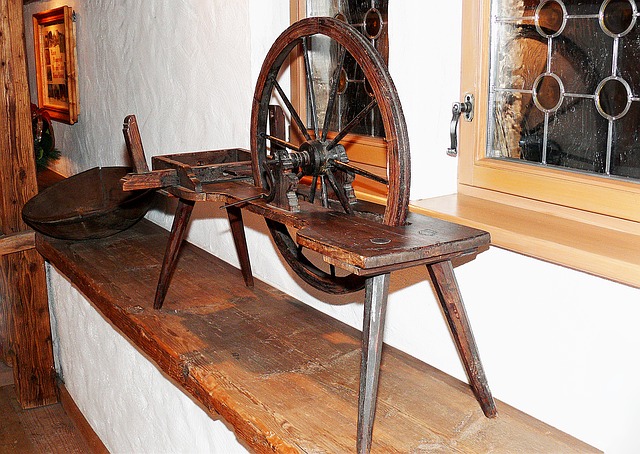By Tim Lambert
Godalming in the Middle Ages
Godalming began as a Saxon village. By the time of the Domesday Book (1086), it was a flourishing community. Godalming may have had a population of around 400. It might seem tiny to us but by the standards of the time, Godalming was a large village.
At the time of the Domesday Book the manor of Godalming belonged to the king. However later in the Middle Ages, the Bishop of Salisbury was Lord of the Manor. In the year 1300, he was granted the right to hold a weekly market in Godalming. He was also allowed to hold an annual fair. In the Middle Ages fairs were like markets but they were held only once a year and they attracted buyers and sellers from a wide area.
Medieval Godalming was a busy little town, although it would seem tiny to us. The main industry in Godalming was making wool. After it was woven the wool was fulled. That means it was pounded in a mixture of water and clay to clean and thicken it. Wooden hammers worked by watermills pounded the wool.
There was also a leather industry in Godalming. The leather was tanned by soaking it in water with tannin, which was obtained from oak bark.
Godalming 1500-1800
The wool industry in Godalming continued to flourish during the 16th century and the little town was prosperous. In 1575 Queen Elizabeth I made Godalming a borough.

In the early 17th century Richard Wyatt left money in his will to be used to build almshouses in Godalming. The Wyatt almshouses were built in 1622.
However, during the 17th century, the wool industry in Godalming declined sharply and the industry shifted to the north of England. The result was considerable hardship in Godalming. However, during the 18th century, Godalming was noted as an industry making stockings.
From the 17th century, there was a paper-making industry in Godalming that lasted until the 20th century. Furthermore, during the 18th century, Godalming was an important stopping point for stagecoaches travelling between Portsmouth and London. Inns in Godalming did a busy trade. The Tsar of Russia, Peter the Great, stayed in an inn at Godalming in 1689.
A stretch of canal was built from Guildford to Godalming in 1764. Also, the Town Bridge was built in 1782.
Modern Godalming
By the time of the first census in 1801, Godalming had a population of just over 3,400. To us, it would seem no more than a village but by the standards of the time, it was a respectably sized market town. Godalming was considerably larger than Guildford at that time. Godalming grew rapidly in the 19th century. By 1851 the population had grown to over 6,500.
The old town hall was built in 1814. Market stalls used to stand underneath it. Then in 1825, an Improvement Act formed a body of men called Improvement Commissioners with powers to pave and light the streets of Godalming.
Godalming gained gas light in 1836. In 1881 Godalming became the first town in Britain to have a public electricity supply.
Meanwhile, Godalming was connected to Guildford and London by railway in 1849. It was connected to Portsmouth by railway in 1859.
Charterhouse School was founded in 1611. Originally it was located in London but it moved to Godalming in 1872.
The old cloth industry in Godalming ended completely by the middle of the 19th century and even stocking-making ended. However, the paper-making industry continued.
Then in 1892, the boundaries of Godalming were extended, and by 1901 the population of Godalming was over 11,000. The first council houses in Godalming were built in the 1920s and 1930s. Furthermore, the boundaries of Godalming were extended in 1928 and 1932. By 1951 the population of Godalming was 14,000.
During the 20th century, the old industries of tanning and papermaking died out in Godalming. However, some light industries came to the town.
Meanwhile, Godalming Museum was founded in 1921. Godalming College opened in 1975.
In 2023 the population of Godalming was 22,000.